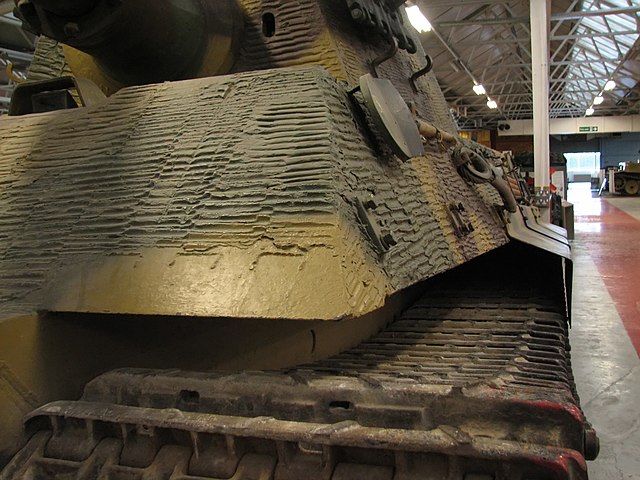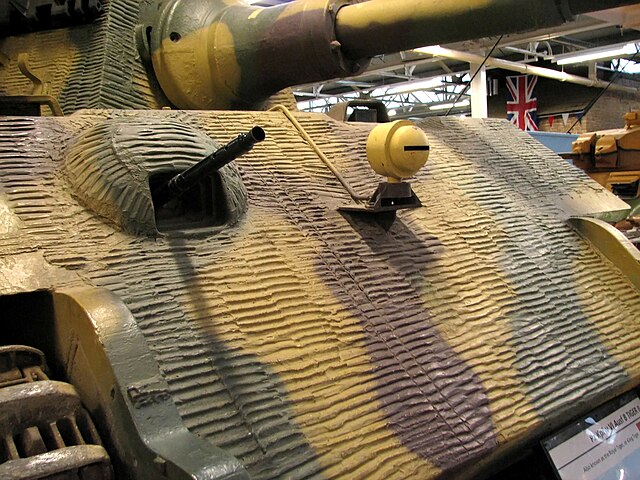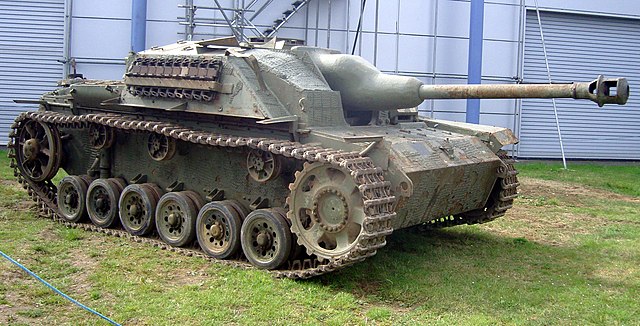Zimmerit was a paste-like coating used on mid- and late-war German armored fighting vehicles during World War II. It was used to produce a hard layer covering the metal armor of the vehicle, providing enough separation that magnetically attached anti-tank mines would fail to stick to the vehicle, despite Germany being the only country to use magnetic anti-tank mines in numbers. Zimmerit was often left off late-war vehicles due to the unfounded concern that it could catch fire when hit. It was developed by the German company Chemische Werke Zimmer & Co (Berlin).
Close view of Zimmerit on the turret and hull of Michael Wittmann's Tiger I.
Close view of Zimmerit on the corner of a Tiger II
Close view of Zimmerit on the glacis of a Tiger II
Stug III with waffle-pattern zimmerit, IWM Duxford museum collection.
The Sturmgeschütz III was an assault gun produced by Germany during World War II. It was the most-produced fully tracked armoured fighting vehicle, and second-most produced German armored combat vehicle of any type after the Sd.Kfz. 251 half-track. It was built on a slightly modified Panzer III chassis, replacing the turret with an armored, fixed superstructure mounting a more powerful gun. Initially intended as a mobile assault gun for direct-fire support for infantry, the StuG III was continually modified, and much like the later Jagdpanzer vehicles, was employed as a tank destroyer.
Sturmgeschütz III Ausführung G
German forces on a short-barrel StuG III Ausf B cross the Desna river on their march east, 1941.
StuG III Ausf.B in Latvia during the Baltic Operation
A StuG III of the Finnish Army in the Heeresgeschichtliches Museum in Vienna, Austria. This model has the concrete armor added postwar by the Finnish Army.








